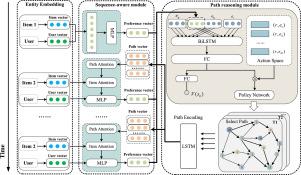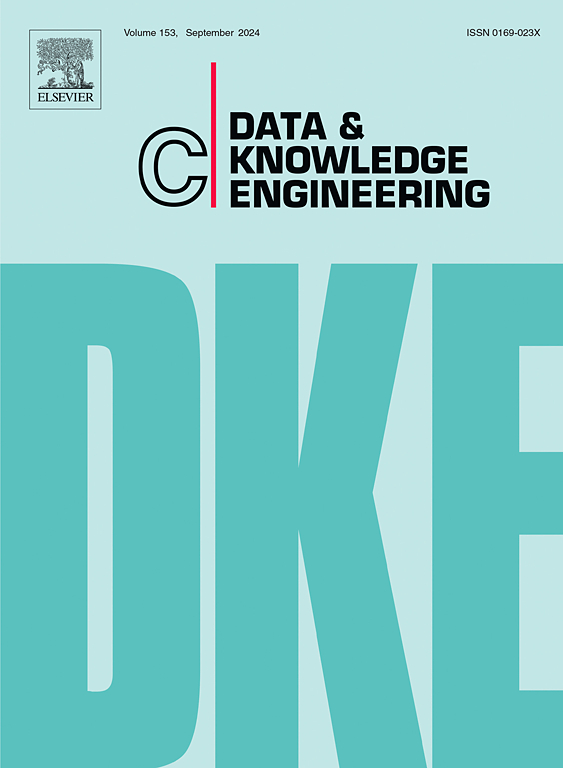时序感知和路径推理的时序知识图推荐
IF 2.7
3区 计算机科学
Q3 COMPUTER SCIENCE, ARTIFICIAL INTELLIGENCE
引用次数: 0
摘要
知识图推荐(KGRec)模型不仅缓解了传统模型遇到的数据稀疏性和冷启动问题,而且通过提供明确的推荐原理,提高了可解释性和可信度。然而,现有的KGRec模型主要集中于从KG中提取用户偏好的静态结构特征,往往忽略了动态时间特征,如购买时间和点击时间。这种疏忽导致了推荐性能的相当大的限制。针对这一挑战,本文提出了一种新的时间知识图推荐模型(TKGRec),该模型充分利用了动态时间特征和静态结构特征来进行更好的推荐。我们特别构造了一个临时的KG,它封装了静态和动态的用户项交互。基于新环境,我们提出了一个序列感知和路径推理框架,其中序列感知模块采用双注意机制从交互中提取时间特征,而路径推理模块采用强化学习提取路径特征。这两个模块无缝地融合在一起,并不断改进,以更全面地了解用户偏好。在三个真实数据集上的实验结果表明,所提出的模型在性能方面明显优于现有的最先进的基线模型。本文章由计算机程序翻译,如有差异,请以英文原文为准。

Temporal knowledge graph recommendation with sequence-aware and path reasoning
Knowledge graph recommendation (KGRec) models not only alleviate the issues of data sparsity and the cold start problem encountered by traditional models but also enhance interpretability and credibility through the provision of explicit recommendation rationales. Nonetheless, existing KGRec models predominantly concentrate on extracting static structural features of user preferences from KG, often neglecting the dynamic temporal features, such as purchase time and click time. This oversight results in considerable limitations in recommendation performance. In response to this challenge, this paper introduces a novel temporal knowledge graph recommendation model (TKGRec), which fully utilizes both dynamic temporal feature and static structure feature for better recommendation. We specifically construct a temporal KG that encapsulates both static and dynamic user–item interactions. Based on the new environment, we propose a sequence-aware and path reasoning framework, in which the sequence-aware module employs a dual-attention mechanism to distill temporal features from interactions, whereas the path reasoning module utilizes reinforcement learning to extract path features. These two modules are seamlessly fused and iteratively refined to capture a more holistic understanding of user preferences. Experimental results on three real-world datasets demonstrate that the proposed model significantly outperforms existing state-of-the-art baseline models in terms of performance.
求助全文
通过发布文献求助,成功后即可免费获取论文全文。
去求助
来源期刊

Data & Knowledge Engineering
工程技术-计算机:人工智能
CiteScore
5.00
自引率
0.00%
发文量
66
审稿时长
6 months
期刊介绍:
Data & Knowledge Engineering (DKE) stimulates the exchange of ideas and interaction between these two related fields of interest. DKE reaches a world-wide audience of researchers, designers, managers and users. The major aim of the journal is to identify, investigate and analyze the underlying principles in the design and effective use of these systems.
 求助内容:
求助内容: 应助结果提醒方式:
应助结果提醒方式:


